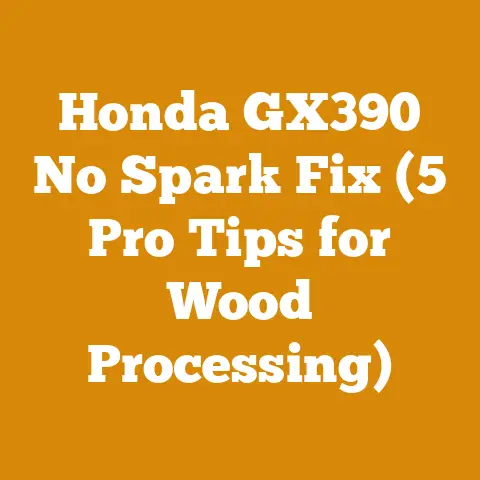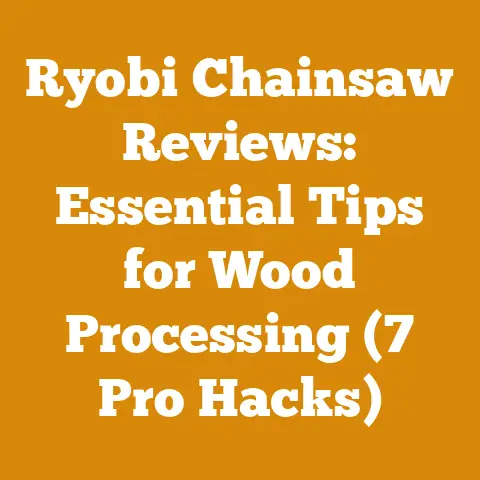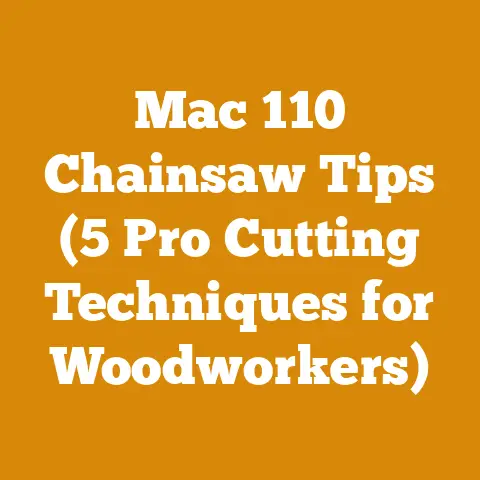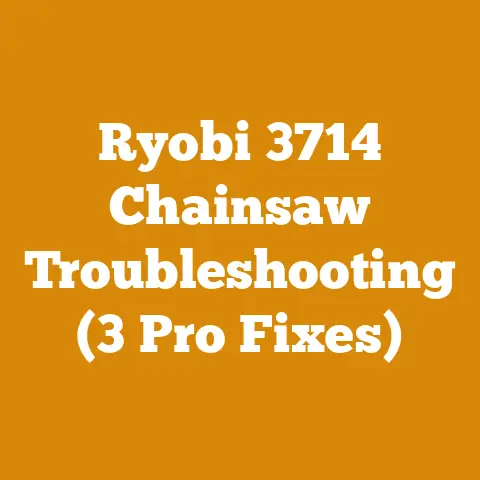Hardwood Shed Doors: Sliding Barn Style Tips (5 Pro Woodshop Hacks)
I once made a colossal blunder when building a firewood shed for my property. This article will delve into the world of hardwood shed doors, specifically focusing on the sliding barn style, and arm you with five pro woodshop hacks to help you avoid my initial mistake and build a shed that stands the test of time – and the elements – without breaking the bank. We’ll explore the costs associated with materials, labor, and tools, and uncover strategies for optimizing your budget.
Hardwood Shed Doors: Sliding Barn Style Tips (5 Pro Woodshop Hacks)
Building a shed with sliding barn doors is a fantastic project. The rustic aesthetic combined with the space-saving design makes it a popular choice. However, the doors are often the most vulnerable part of the structure. Using the right materials and construction techniques is crucial for longevity and functionality. Hardwood is the key, but what kind of hardwood? And how do you keep costs manageable? Let’s dive into the details.
1. Choosing the Right Hardwood: Species, Grades, and Costs
The type of hardwood you select will significantly impact the cost and lifespan of your sliding barn doors. Not all hardwoods are created equal. Factors like durability, resistance to rot and insects, and workability all play a role.
- Oak: A classic choice, oak is known for its strength and durability. White oak is particularly resistant to rot, making it a great option for outdoor use. However, oak can be more expensive than other hardwoods. Expect to pay anywhere from $4 to $10 per board foot, depending on the grade and species (red oak vs. white oak).
- Maple: A lighter-colored hardwood, maple is known for its smooth surface and workability. It’s a good option if you plan to paint your doors. However, it’s not as naturally rot-resistant as oak. Prices typically range from $3 to $8 per board foot.
- Ash: Similar in appearance to oak, ash is a strong and durable hardwood. It’s also relatively easy to work with. Expect to pay between $3.50 and $9 per board foot.
- Poplar: While technically a hardwood, poplar is softer and less expensive than the other options. It’s a good choice for painted doors or for components that are not directly exposed to the elements. Prices usually range from $2 to $5 per board foot.
- Cedar (Alternatives): While not a true hardwood, cedar offers excellent rot resistance and a beautiful appearance. It’s a popular choice for outdoor projects, though it’s softer than oak or maple. Expect to pay between $3 and $7 per board foot.
Data Points and Benchmarks:
- According to the USDA Forest Service, the average stumpage price (the price paid to harvest timber) for hardwood sawtimber in the Eastern United States varies widely by species and region. For example, in the Appalachian region, white oak stumpage prices can average $300-$500 per thousand board feet (MBF), while red oak can be closer to $200-$400 per MBF. These prices are just the starting point, as they don’t include the costs of milling, drying, and transportation.
- Global timber prices are influenced by factors like deforestation, climate change, and international trade agreements. The Food and Agriculture Organization of the United Nations (FAO) provides data on global forest resource assessments and timber market trends.
- A recent report by Forest2Market, a timber market analysis firm, indicates that hardwood lumber prices have been volatile in recent years due to supply chain disruptions and increased demand for home improvement projects.
Cost Breakdown Example (Single Door, 3ft x 7ft):
Let’s assume you’re building a single sliding barn door that is 3 feet wide and 7 feet tall. You’ll need to calculate the board footage required.
- Oak (White Oak): Assuming you’re using 1-inch thick lumber (which is typically ¾ inch actual thickness after planing), you’ll likely need around 30-40 board feet, allowing for some waste. At $7 per board foot, the lumber cost would be $210 – $280.
- Maple: At $5 per board foot for the same dimensions, the lumber cost would be $150 – $200.
- Poplar: At $3 per board foot, the lumber cost would be $90 – $120.
Pro Tip: Consider buying lumber in bulk or directly from a local sawmill to potentially save money. Also, check for lumber sales and discounts at your local lumberyard.
Grading:
Hardwood lumber is graded based on the number and size of defects. Higher grades (e.g., FAS – First and Seconds) have fewer defects and are more expensive. Lower grades (e.g., #1 Common, #2 Common) have more defects but are more affordable. For a shed door, you can often get away with using #1 Common or even #2 Common lumber, as long as you’re willing to work around the knots and imperfections.
Personal Experience: I once built a small bookshelf using #2 Common cherry lumber. While it required more careful cutting and planning to avoid the knots, I saved a significant amount of money compared to using FAS grade lumber. The finished product had a rustic charm that I actually preferred.
2. Frame Construction: Mortise and Tenon vs. Pocket Screws (Cost Comparison)
The frame is the backbone of your sliding barn door. A well-constructed frame will prevent warping and ensure that the door hangs properly. Two common frame construction methods are mortise and tenon joints and pocket screw joints.
-
Mortise and Tenon Joints: This is a traditional woodworking joint known for its strength and durability. It involves creating a “mortise” (a hole) in one piece of wood and a “tenon” (a projecting tongue) on the other. The tenon fits into the mortise, creating a strong mechanical connection. Mortise and tenon joints are ideal for outdoor projects where strength and longevity are critical.
- Pros: Extremely strong, durable, aesthetically pleasing (especially if exposed), long-lasting.
- Cons: Requires more skill and time to execute, requires specialized tools (mortise machine, chisels), can be more expensive due to increased labor.
-
Pocket Screw Joints: This method involves drilling angled holes into one piece of wood and then using screws to attach it to the other piece. Pocket screw joints are quick and easy to create, making them a popular choice for DIY projects.
- Pros: Fast, easy, requires minimal skill, relatively inexpensive (pocket hole jig and screws are affordable).
- Cons: Not as strong as mortise and tenon joints, less aesthetically pleasing (pocket holes need to be filled), may not be suitable for heavy or frequently used doors.
Cost Comparison:
| Feature | Mortise and Tenon | Pocket Screws |
|---|---|---|
| Skill Level | Advanced | Beginner |
| Time Required | High | Low |
| Tool Cost | Moderate to High | Low |
| Material Cost | Moderate | Low |
| Joint Strength | Very High | Moderate |
| Aesthetic Appeal | High (if exposed) | Low (needs filling) |
| Labor Cost (if hiring) | Higher | Lower |
Tool Costs:
- Mortise and Tenon: Mortise machine ($200 – $1000+), chisels ($50 – $200), marking gauge ($20 – $50), hand saw ($30 – $100).
- Pocket Screws: Pocket hole jig ($30 – $150), drill ($50 – $200), pocket screws ($10 – $20 per box).
Labor Costs (if hiring):
- Hiring a professional woodworker to create mortise and tenon joints will be more expensive than hiring someone to use pocket screws. Expect to pay $50-$100+ per hour for a skilled woodworker, compared to $20-$50 per hour for someone with basic carpentry skills.
Recommendation:
For a shed door, I recommend using mortise and tenon joints if you have the skills and tools. The added strength and durability will be worth the investment in the long run. However, if you’re on a tight budget or are new to woodworking, pocket screw joints can be a viable alternative, especially if you use high-quality screws and reinforce the joints with glue.
Personal Story: When I built my first shed with mortise and tenon joinery, it took me significantly longer than I anticipated. I underestimated the precision required and ended up with several joints that were too loose. After some practice and a few do-overs, I finally got the hang of it. The experience taught me the value of patience and the importance of investing in quality tools.
3. Panel Infill Options: Solid Wood, Plywood, and Alternatives (Cost Analysis)
The panel infill is the material that fills the space within the door frame. You have several options to choose from, each with its own advantages and disadvantages in terms of cost, durability, and aesthetics.
-
Solid Wood: Using solid wood for the panels creates a beautiful and durable door. You can use the same hardwood as the frame or choose a complementary species. Solid wood panels can be installed as a single piece or as multiple smaller pieces joined together with tongue and groove joints.
- Pros: Strong, durable, aesthetically pleasing, can be easily repaired.
- Cons: Can be expensive, prone to expansion and contraction with changes in humidity, can be heavy.
-
Plywood: Plywood is a cost-effective alternative to solid wood. It’s made by gluing together multiple layers of wood veneer, which makes it strong and stable. Exterior-grade plywood is designed to withstand moisture and is a good choice for outdoor projects.
- Pros: Affordable, stable (less prone to warping than solid wood), lightweight, easy to work with.
- Cons: Not as aesthetically pleasing as solid wood, edges can be prone to chipping, can delaminate if exposed to excessive moisture.
-
Alternatives: There are other options for panel infill, such as:
- Reclaimed Wood: Using reclaimed wood adds a rustic and unique touch to your shed doors. It’s also an environmentally friendly choice. However, reclaimed wood can be more difficult to work with and may require more preparation.
- Metal: Metal panels can be used to create a modern and industrial look. They’re also very durable and low-maintenance. However, metal can be expensive and may require specialized tools to work with.
- Composite Materials: Composite materials like PVC or fiber cement offer excellent weather resistance and low maintenance. However, they may not have the same aesthetic appeal as wood.
Cost Analysis (per square foot):
| Material | Average Cost (per sq ft) | Notes |
|---|---|---|
| Solid Wood (Oak) | $10 – $20 | Varies depending on grade and thickness. |
| Solid Wood (Poplar) | $5 – $10 | A more affordable hardwood option. |
| Plywood (Exterior) | $3 – $7 | Choose a high-quality exterior grade plywood for best results. |
| Reclaimed Wood | $5 – $15 | Price depends on the source and condition of the wood. May require additional processing. |
| Metal | $15 – $30 | Varies depending on the type of metal (steel, aluminum) and thickness. |
| Composite | $8 – $15 | Offers excellent weather resistance. |
Recommendation:
For a balance of cost, durability, and aesthetics, I recommend using exterior-grade plywood for the panel infill. Choose a plywood with a smooth surface and a good veneer core. You can then paint or stain the plywood to match the frame. If you’re looking for a more rustic look, consider using reclaimed wood. If budget is not a constraint, solid wood will provide the most durable and aesthetically pleasing result.
Budget Optimization Tip:
Consider using thinner solid wood panels (e.g., ½ inch or ¾ inch) to reduce material costs. You can reinforce the panels with a backing of plywood or hardboard for added stability.
4. Hardware Selection: Track Systems, Rollers, and Handles (Durability vs. Cost)
The hardware is what makes your sliding barn doors function properly. Choosing the right hardware is essential for smooth operation and long-term durability. The most important components are the track system, rollers, and handles.
-
Track Systems: The track system is what supports the weight of the doors and allows them to slide. Look for a track system that is rated for the weight of your doors. Steel tracks are generally more durable than aluminum tracks. Consider the length of the track needed to accommodate the door’s full range of motion.
- Cost: $50 – $300+ per track system (depending on length, material, and features).
-
Rollers: The rollers are what allow the doors to glide along the track. Choose rollers with sealed bearings for smooth and quiet operation. Look for rollers made from durable materials like steel or nylon.
- Cost: $20 – $100+ per set of rollers (depending on quality and material).
-
Handles: The handles are what you use to open and close the doors. Choose handles that are comfortable to grip and that match the style of your shed.
- Cost: $10 – $50+ per handle (depending on style and material).
Durability vs. Cost Considerations:
- Track System: Invest in a high-quality steel track system, even if it costs more upfront. A cheap track system is likely to bend or break over time, leading to problems with the doors.
- Rollers: Choose rollers with sealed bearings for smooth and quiet operation. Avoid rollers with plastic bearings, as they are likely to wear out quickly.
- Handles: Choose handles that are comfortable to grip and that are made from durable materials like steel or cast iron.
Cost Breakdown Example:
- Basic Track System (Steel, 6ft): $75
- High-Quality Track System (Steel, 6ft, Soft-Close): $250
- Basic Rollers (Steel, Unsealed Bearings): $30
- High-Quality Rollers (Steel, Sealed Bearings): $80
- Basic Handle (Steel): $15
- Decorative Handle (Cast Iron): $40
Industry Insights:
- Companies like National Hardware and Rustica Hardware are known for producing high-quality sliding barn door hardware.
- Online retailers like Amazon and eBay offer a wide variety of sliding barn door hardware at competitive prices.
- Consider reading customer reviews before purchasing hardware to get an idea of its quality and durability.
Personal Experience: I once tried to save money by buying a cheap sliding barn door track system from a discount retailer. The track was made from thin aluminum and quickly bent under the weight of the doors. I ended up having to replace the entire system with a more expensive steel track, which cost me more in the long run.
5. Finishing and Sealing: Protecting Your Hardwood Doors (Cost-Effective Options)
Protecting your hardwood doors from the elements is essential for extending their lifespan. Finishing and sealing the wood will help to prevent moisture damage, rot, and insect infestation.
-
Paint: Painting your doors is a good option if you want to match the color of your shed or if you’re using a less expensive wood like poplar. Use a high-quality exterior paint that is designed to withstand the elements.
- Cost: $20 – $50 per gallon (depending on quality and brand).
-
Stain: Staining your doors allows the natural beauty of the wood to show through. Use a penetrating stain that will protect the wood from moisture and UV damage.
- Cost: $25 – $60 per gallon (depending on quality and brand).
-
Sealer: Applying a sealer after painting or staining will provide an extra layer of protection. Choose a sealer that is compatible with your paint or stain.
- Cost: $20 – $50 per gallon (depending on quality and brand).
-
Alternative Finishes:
- Linseed Oil: A natural oil finish that penetrates the wood and provides a water-resistant barrier. It’s a relatively inexpensive option, but it requires regular reapplication.
- Spar Varnish: A durable varnish designed for marine applications. It offers excellent protection from moisture and UV damage. However, it can be more expensive than other finishes.
Cost-Effective Options:
- DIY Finishes: Consider making your own wood finish using ingredients like beeswax, linseed oil, and turpentine. There are many recipes available online.
- Reclaimed Finishes: Look for leftover paint or stain at your local recycling center or online marketplaces.
- Proper Preparation: Thoroughly sand and clean the wood before applying any finish. This will ensure that the finish adheres properly and provides maximum protection.
Finishing Cost Breakdown (Based on 3ft x 7ft Door):
- Paint: 1 quart of exterior paint ($15-$25)
- Stain: 1 quart of exterior stain ($20-$30)
- Sealer: 1 quart of exterior sealer ($15-$25)
- Brushes/Rollers: $10-$20
Industry Recommendations:
- Brands like Sherwin-Williams and Benjamin Moore offer high-quality exterior paints and stains.
- Read the instructions on the product label carefully before applying any finish.
- Apply multiple coats of finish for maximum protection.
Personal Story: I once neglected to properly seal a set of cedar planters that I built for my garden. Within a year, the planters had started to rot and fall apart. I learned the hard way the importance of protecting wood from the elements.
Pro Woodshop Hack:
Before applying any finish, test it on a small, inconspicuous area of the wood to make sure you like the color and that it adheres properly.
Budgeting and Cost Management in Wood Harvesting and Firewood Preparation
Beyond the specific costs of building hardwood shed doors, it’s important to consider the broader context of wood harvesting and firewood preparation, especially if you’re sourcing your own lumber. Here’s a look at some key cost factors:
Timber Purchase or Harvesting Costs:
- Stumpage Fees: As mentioned earlier, stumpage fees are the prices paid for standing timber. These vary widely based on species, location, and timber quality.
- Logging Costs: If you’re hiring a logging crew, you’ll need to factor in their wages, equipment rental fees, and transportation costs. Logging costs can range from $500 to $1500+ per acre, depending on the terrain and the volume of timber harvested.
- Permits and Regulations: In many areas, you’ll need to obtain permits before harvesting timber. These permits can cost anywhere from a few dollars to several hundred dollars, depending on the location and the scope of the harvest.
Tool Maintenance:
- Chainsaw Maintenance: Chainsaws require regular maintenance, including sharpening the chain, cleaning the air filter, and replacing spark plugs. The cost of chainsaw maintenance can range from $50 to $100+ per year.
- Wood Splitter Maintenance: Wood splitters also require regular maintenance, including changing the hydraulic fluid, lubricating the moving parts, and replacing worn components. The cost of wood splitter maintenance can range from $50 to $150+ per year.
Labor Wages:
- Logging Crew Wages: If you’re hiring a logging crew, you’ll need to pay them competitive wages. Logging wages vary by region and experience level, but typically range from $15 to $30+ per hour.
- Firewood Handlers Wages: If you’re selling firewood, you’ll need to pay your firewood handlers a fair wage. Firewood handler wages typically range from $12 to $25+ per hour.
Industry Benchmarks and Statistical Data:
- The average price per cord of firewood varies by region and species. According to the U.S. Energy Information Administration (EIA), the average price per cord of seasoned hardwood firewood in the Northeast United States is around $250-$400.
- Equipment rental fees for logging tools and wood splitters can range from $50 to $200+ per day, depending on the equipment and the rental company.
Cost Optimization and Budget Management Tips:
- Harvest Timber Sustainably: Practice sustainable forestry techniques to ensure that you can continue to harvest timber in the future.
- Invest in Quality Tools: Invest in high-quality tools that will last for years and require less maintenance.
- Maintain Your Tools Regularly: Perform regular maintenance on your tools to prevent breakdowns and extend their lifespan.
- Shop Around for Supplies: Compare prices from different suppliers before purchasing lumber, hardware, and finishes.
- Consider DIY Options: Consider making your own wood finish or building your own jigs and fixtures to save money.
- Track Your Expenses: Keep track of all your expenses so you can identify areas where you can save money.
Calculations and Formulas:
-
Board Foot Calculation: A board foot is a unit of measurement for lumber that is 1 inch thick, 12 inches wide, and 12 inches long. To calculate the number of board feet in a piece of lumber, use the following formula:
- (Thickness in inches x Width in inches x Length in inches) / 144
-
Cord Calculation: A cord is a unit of measurement for firewood that is 4 feet high, 4 feet wide, and 8 feet long. To calculate the volume of a stack of firewood in cords, use the following formula:
-
(Height in feet x Width in feet x Length in feet) / 128
- Drying Time Estimation: The drying time for firewood depends on several factors, including the species of wood, the climate, and the size of the pieces. A general rule of thumb is that hardwood firewood needs to dry for at least 6-12 months before it is ready to burn.
Conclusion:
Building hardwood shed doors in the sliding barn style is a rewarding project that can add both beauty and functionality to your property. By carefully considering the costs of materials, labor, and tools, and by implementing cost optimization strategies, you can build doors that are both durable and affordable. Remember to choose the right hardwood species, construct a strong frame, select durable hardware, and protect your doors with a high-quality finish. And, learn from my mistakes! With a little planning and effort, you can create a shed that will last for years to come. Now, get out there and start building!






